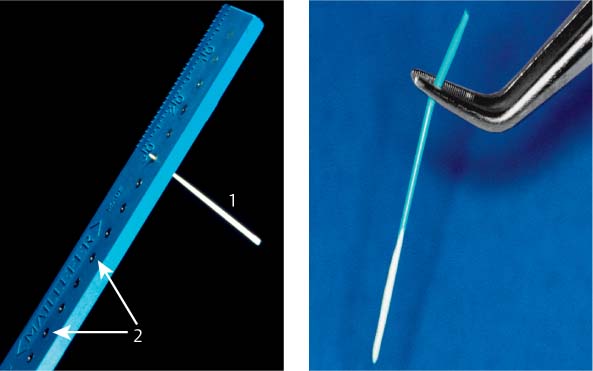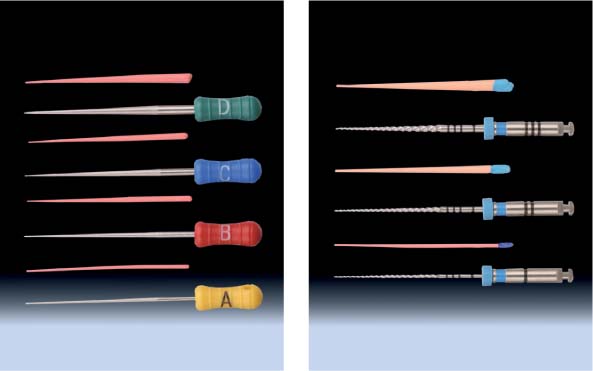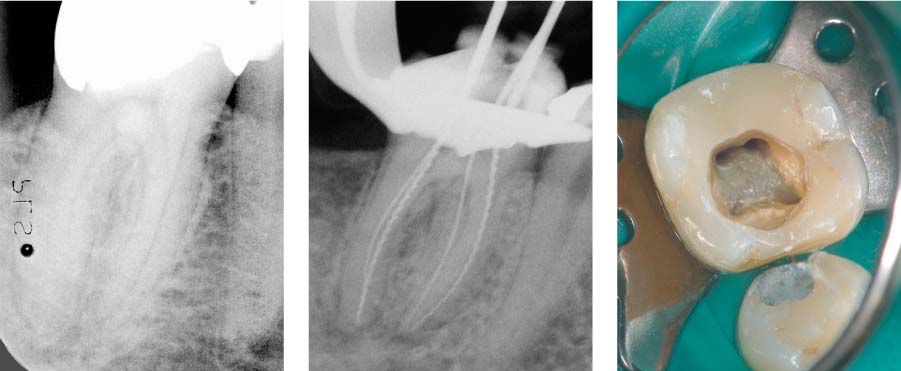29 Lateral Compaction of Gutta-percha
Cold lateral compaction of gutta-percha continues to be the gold standard root canal filling technique and is the method most often used in routine endodontic practice (Slaus and Bottenberg, 2002). Because about 50% of gutta-percha points are thinner than the ISO norm (Schäfer and Göhring, 1993), the actual diameter of the master point should be checked with a measurement gauge (Fig. 29.1). Following mechanical root canal preparation using highly tapered instruments, a master point of corresponding taper should be used to simplify the root canal filling procedure and to increase the volume proportion of gutta-percha in the filling (Hembrough et al., 2002; Gordon et al., 2005).
A precisely fitted master point should extend to the instrumented working length and exhibit slight friction in the apical portion of the canal; the latter can be clinically demonstrated by slight resistance (tug back) when removing the master point from the canal (Wesselink, 1995).
Finger spreaders instead of hand spreaders should be used for compaction, as this provides better sealing (Simons et al., 1991) and at the same time reduces the danger of vertical root fracture (Lertchirakarn et al., 1999).
29.1 Gutta-percha master point
Left: The holes (2) in the measurement gauge for gutta-percha points (1) are ISO standardized. If the tip of the gutta-percha point extrudes beyond the measurement gauge, this is an indication that the point is too thin and should be cut off using a scalpel. Following this, the tip diameter will correspond to the appropriate ISO size.
Right: A master point evenly coated with sealer.
29.2 Highly tapered gutta-percha points
Left: The finger spreader should correspond to the taper of the selected master point.
Right: NiTi root canal instruments with 2%, 4%, and 6% taper displayed with gutta-percha points of identical taper.
29.3 Root canal filling
Left: Diagnostic radiograph of tooth 46.
Middle: Working length determination radiograph.
Right: Clinical view following preparation of the four root canals.
Stay updated, free dental videos. Join our Telegram channel

VIDEdental - Online dental courses





